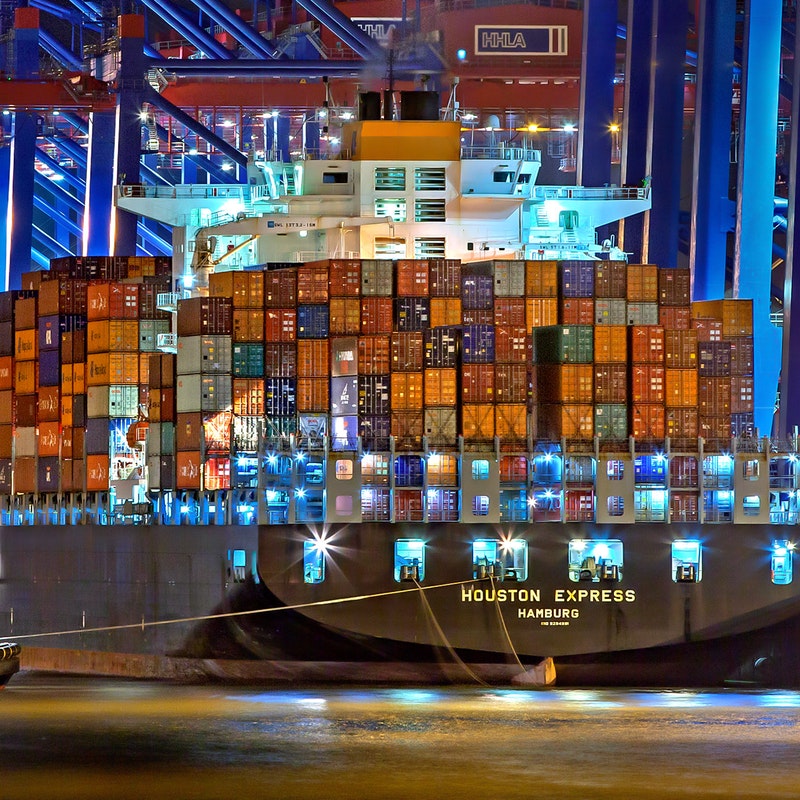The risks of a full-on trade war between the US and EU are increasing. Since the international system of trade finance is shaped by new challenges and opportunities, global supply chains will be disrupted and the international order will be revised.
Euro-Atlantic Trade Relations and Supply Chains
Euro-Atlantic cooperation in areas of trade and finance has improved intra-regional economic prosperity, decreased politico-economic risks, and empowered the rule-based international order. With the announcement of tariffs by the US government on key allies, including the EU, the revisionist nature of current US trade policy is threatening the existing international structure only achievable through long-term cooperation. Due to the interconnectedness of the Euro-Atlantic economies, intra-regional supply chains are likely to be adversely disrupted, leading to lower productivity growth, higher price inflation and a setback in intra-regional relations. This article looks at the rationale behind the decision by the US government to impose tariffs on the EU, the winners and losers of an escalating trade war, and an overview of future Euro-Atlantic trade-finance.

US Trade Policy Rationale
The persistent trade deficit of the US has been particularly influential in shaping the Trump administration’s protectionist “America First” trade policy. In 2017 alone, the US trade deficit reached a high of 566b USD, equivalent to 0.3% of US GDP. While the bi-lateral current account between the US and EU amounts to –100b USD, Trump’s accusations of “unfair trade practices by the EU” have been criticised by many economists, including Nobel Laureates Robert Shiller and Paul Krugman, on grounds of neglecting the fundamental forces of markets and international relations. The exorbitant privilege of the US dollar (through seigniorage and the strength of the currency), as well as the US economy’s high-income consumer base of 300 million people, increases domestic absorption demand of foreign goods and services relative to other economies, and allows the average American consumer to enjoy lower prices at greater purchasing power per dollar. Therefore, the US trade deficit arises from unparalleled relative strength of the US economy, and “protecting” the local economy, by imposing tariffs and other barriers to trade, is primarily driven by ideology and a perception of threat.
Winners and Losers of a Euro-Atlantic Trade War
A Euro-Atlantic trade war is unlikely to yield absolute benefits to its belligerents, and the relative benefits are likely to be reaped by other international actors, such as China. The EU has already responded to the initial wave of tariffs and has shown credibility in responding tit-for-tat to future tariffs. The dangers of escalation are partly mitigated by a self-defence trade mandate on the part of the EU, reducing the probability of EU-initiated tariffs, where any signals of future tariffs are likely to be observed from announcements made by the US Department of State or from government officials spontaneously communicating through less official, social media platforms, such as Twitter. The risks of a heightened trade war nonetheless remain, and it is at the discretion of the US executive on how to proceed, thereby exacerbating market uncertainty within the Euro-Atlantic region.
For the Euro-Atlantic community, an accelerated trade war will most likely lead to higher prices of goods and services, decreased productivity gains, and reduced trans-Atlantic investment. Although Morgan and Stanley estimate 1% of total global trade being affected by tariffs, for some companies the 1% covers a much larger share of their supply chain. Harley-Davidson, for example, with 14% of its sales going to the EU with a total quantity of 14,000 motorcycles sold, has already announced moving production to India, Brazil and Thailand due to higher projected costs. Volkswagen and BMW shares have dropped sharply since the Trump administration’s announcement of additional tariffs on the 22nd of June 2018, and while those domestic industries with small exposure to global supply chains may benefit in sales revenue, the rising costs of other goods and services are likely to partially offset any substantial gains. Furthermore, for industries with large international trade exposure, new production infrastructure depends on large investments and time-to-build; moving capital-intensive industries may outweigh the political risks of waiting for a new US administration.
For China, a fragmented international order creates a power vacuum with opportunities for pushing forwards China’s “renminbi agenda,” influence in Europe and Africa, and South China Sea geopolitical strategy. Chinese investments to the US in 2017 alone plummeted 92%, demonstrating a keenness to detach China from the US, and increasing investments in Eastern Europe and Eastern Africa, where Chinese investments already amount to over one-sixth of all lending to the continent. Although the prominence of the US dollar is likely to continue, shifts in the global-political status quo raise questions of international currency leadership; the renminbi has steadily become more internationalised, and since October 2016 has been added to the IMF’s Special Drawing Rights basket. Furthermore, tariffs delegitimize the institutions built by the US; Donald Tusk recently at the G7 summit stated his worries of how “the rules-based international order is being challenged […] by its main architect and guarantor: the US”. The relative power balance is likely to find a shared equilibrium between the EU, US and China, where we may see new geopolitical security challenges, such as with the South China Sea.
Future Outlooks for Euro-Atlantic Trade-Finance
Although markets have become more volatile due to increased political uncertainty, the US market will continue to be attractive to international investors in the long run through the sheer scale of the US economy. The next US presidential election will be in 2020 and current mid-term elections are showing a shift in support towards political opposition. However, market indicators in the US and EU are already showing signs of the current business cycle coming to an end, making investments into gilts and other safe financial instruments compelling. Unemployment in the US, for example, is arguably below the natural rate, US sovereign debt is increasing and accelerated by US tax cuts, and the yield curve is starting to show signs of invertedness.
A full-fledged trade war between the EU and US would likely accelerate the end of the business cycle, creating new challenges for investors and firms with far-reaching supply chains.





























